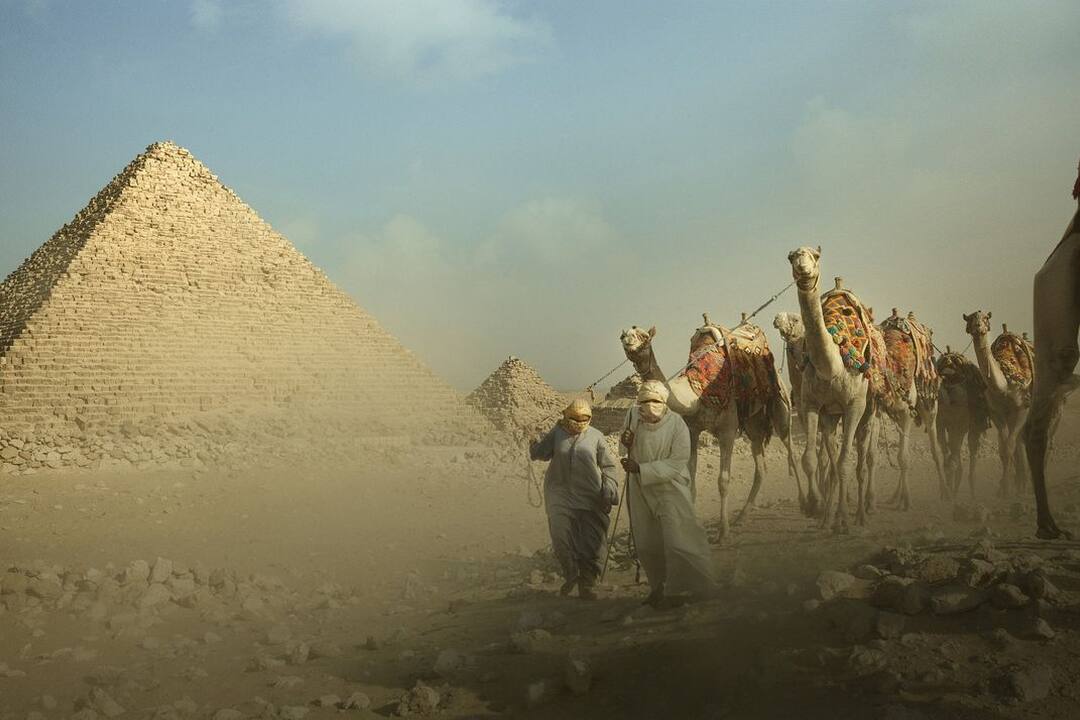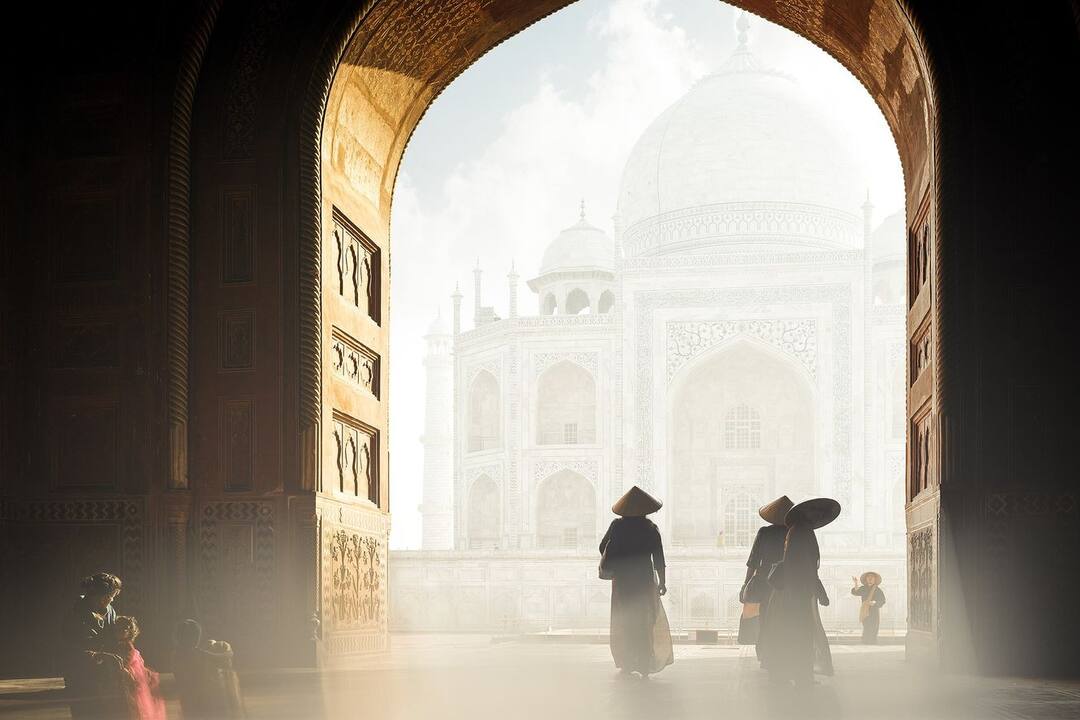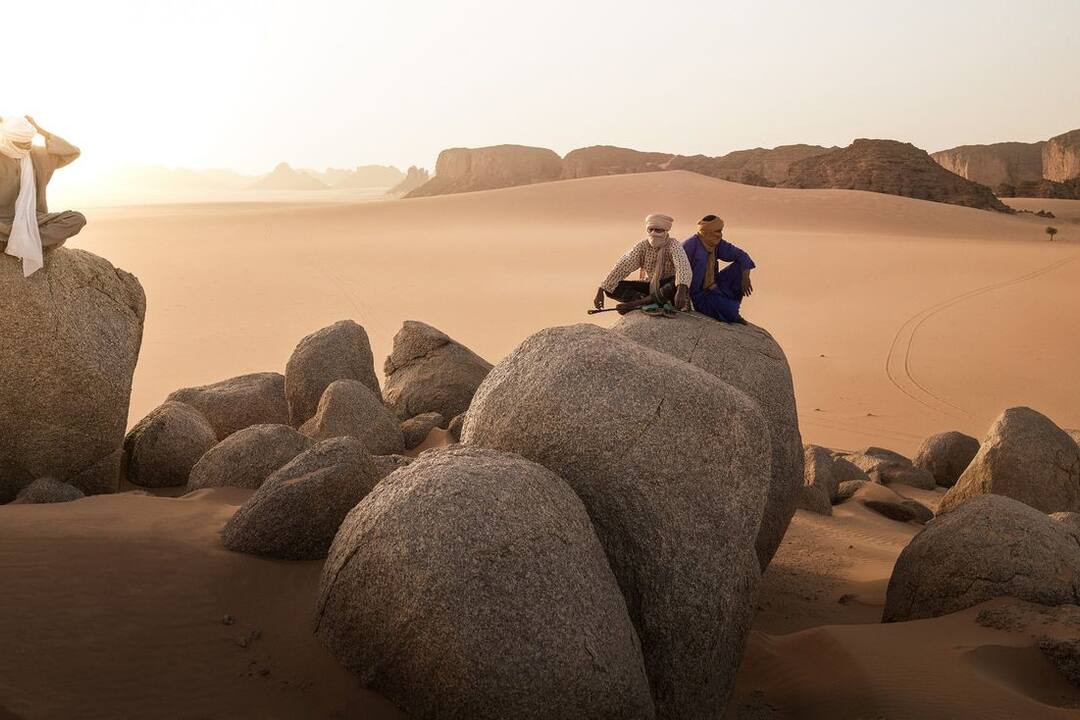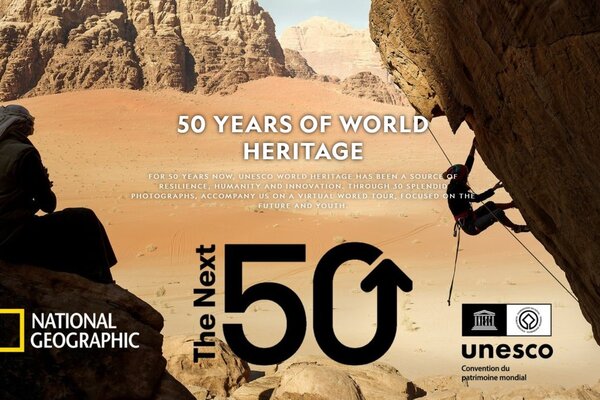28 September 2022
For 50 years now, UNESCO World Heritage has been a source of resilience, humanity and innovation. Through these splendid photographs, accompany us on a virtual world tour, focused on the future and youth.

Temporal Illusion, Pyramids of Giza, UNESCO World Heritage, Cairo, Egypt, 2018
Memphis and its Necropolis – the Pyramid Fields from Giza to Dahshur
The capital of the Old Kingdom of Egypt has some extraordinary funerary monuments, including rock tombs, ornate mastabas, temples and pyramids. In ancient times, the site was considered one of the Seven Wonders of the World.
More: https://whc.unesco.org/en/list/86
Copyright: © Al Safar
Author: Yan Bighetti de Flogny
License: All right reserved

Children’s complicity in Fort Jesus, UNESCO World Heritage, Mombasa, Kenya, 2019
The Fort, built by the Portuguese in 1593-1596 to the designs of Giovanni Battista Cairati to protect the port of Mombasa, is one of the most outstanding and well preserved examples of 16th Portuguese military fortification and a landmark in the history of this type of construction. The Fort's layout and form reflected the Renaissance ideal that perfect proportions and geometric harmony are to be found in the human body. The property covers an area of 2.36 hectares and includes the fort's moat and immediate surroundings.
More: https://whc.unesco.org/en/list/1295
Copyright: © Al Safar
Author: Yan Bighetti de Flogny
License: All right reserved

On the threshold, Taj Mahal, UNESCO World Heritage, India, 2020
An immense mausoleum of white marble, built in Agra between 1631 and 1648 by order of the Mughal emperor Shah Jahan in memory of his favourite wife, the Taj Mahal is the jewel of Muslim art in India and one of the universally admired masterpieces of the world's heritage
More: https://whc.unesco.org/en/list/252
Copyright: © Al Safar
Author: Yan Bighetti de Flogny
License: All right reserved

Children's games in front of the al-Nuri mosque, part of UNESCO program "Revive the spirit of Mosul", Mosul, Iraq, 2021
In February 2018, the Director-General of UNESCO, Audrey Azoulay, launched the flagship initiative “Revive the Spirit of Mosul” as the Organization’s response for the recovery of one of Iraq’s iconic cities. Reviving Mosul is not only about reconstructing heritage sites, it is about empowering the population as agents of change involved in the process of rebuilding their city through culture and education. It is with a strong message of hope and resistance to Iraq and to the world, a message that an inclusive, cohesive and equitable society is the future that Iraqis deserve, that the “Revive the spirit of Mosul” Flagship Initiative was born.
More: https://www.unesco.org/en/revive-mosul
Copyright: © Al Safar
Author: Yan Bighetti de Flogny
License: All right reserved

Men in the lunar landscape of Tassili n'Ajjer, UNESCO World Heritage, Algeria, 2018
Located in a strange lunar landscape of great geological interest, this site has one of the most important groupings of prehistoric cave art in the world. More than 15,000 drawings and engravings record the climatic changes, the animal migrations and the evolution of human life on the edge of the Sahara from 6000 BC to the first centuries of the present era. The geological formations are of outstanding scenic interest, with eroded sandstones forming ‘forests of rock’.
More: https://whc.unesco.org/en/list/179/
Copyright: © Al Safar
Author: Yan Bighetti de Flogny
License: All right reserved

Qasr al-Farid, Hegra Archaelogcial Site, UNESCO World Heritage, Saudi Arabia
The Hegra Archaeological Site (al-Hijr / Madā ͐ in Ṣāliḥ) is the first World Heritage property to be inscribed in Saudi Arabia. Formerly known as Hegra it is the largest conserved site of the civilization of the Nabataeans south of Petra in Jordan. It features well-preserved monumental tombs with decorated facades dating from the 1st century BC to the 1st century AD. The site also features some 50 inscriptions of the pre-Nabataean period and some cave drawings. Al-Hijr bears a unique testimony to Nabataean civilization. With its 111 monumental tombs, 94 of which are decorated, and water wells, the site is an outstanding example of the Nabataeans’ architectural accomplishment and hydraulic expertise.
More: https://whc.unesco.org/en/list/1293/
Copyright: © Al Safar
Author: Yan Bighetti de Flogny
License: All right reserved
Discover more
50 Years of World Heritage | National Geographic
UNESCO World Heritage's 50th anniversary Exhibition
World Heritage: what is UNESCO's impact
Lazare Eloundou, Director of World Heritage Centre, testifies to the impact of world heritage and describes the concrete work of UNESCO for the promotion of culture, from Abu Simbel to the Al Nuri Mosq in Mosul.
Original article
Permanent link: http://en.unesco.kz/50-years-of-unesco-world-heritage-in-partnership-with-national-geographic
